| From More to Four |
Marcy Petrini
August, 2022
At Convergence® last month I wore this shawl which I had named “Ripples on Knoxville Lakes.” I had originally planned to submit it to the fashion show, but life interferes with weaving sometimes and the shawl got barely finished in time for the conference. Instead, I wore to the fashion show event.

On the way there I met a colleague who admired my shawl and asked: “Eight shafts?” “No, I said, forty.” “Oh, she replied, I will never be able to weave that.”
That’s true and it isn’t. She wouldn’t be able to weave that exact shawl unless she had 40 shafts, but the idea of the shawl came from the many lakes in the Knoxville area, and I imagine ripples any time we have standing water. The concept of ripples on water, however, can be woven with many fewer shafts.
For the 40-shaft version I started with a pointed twill in the threading and treadling, and then I “played with” the tie-up which I then converted to a lift plan. The drawdown is below.
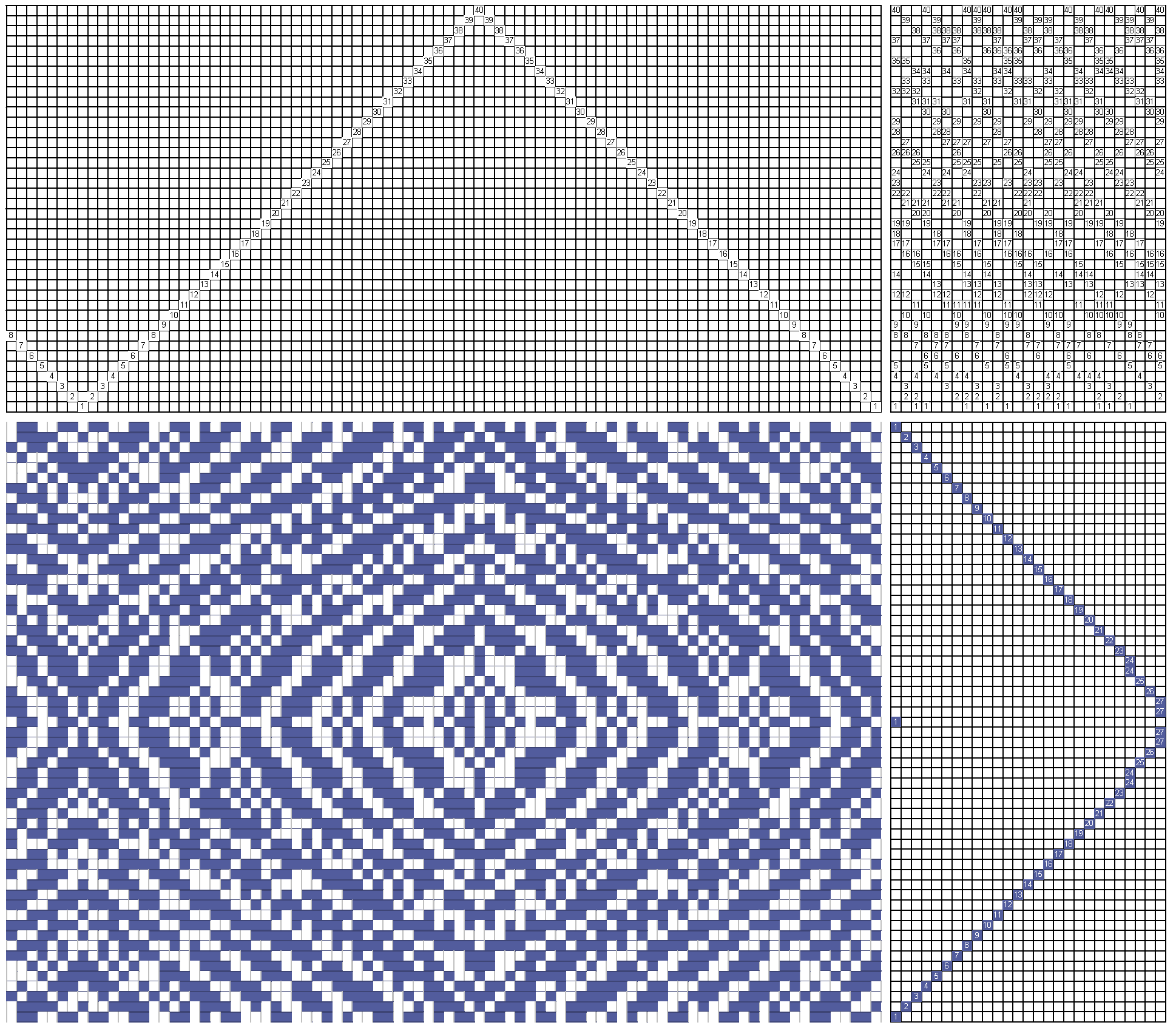
Here is a close up of the fabric. The warp is Tencel™, variegated and dyed by my friend Margaret Pittman. Sadly, she is no longer able to dye. She called this yarn Atlantic Moonglow with purples, and blues. The weft is 20/2 lilac silk.
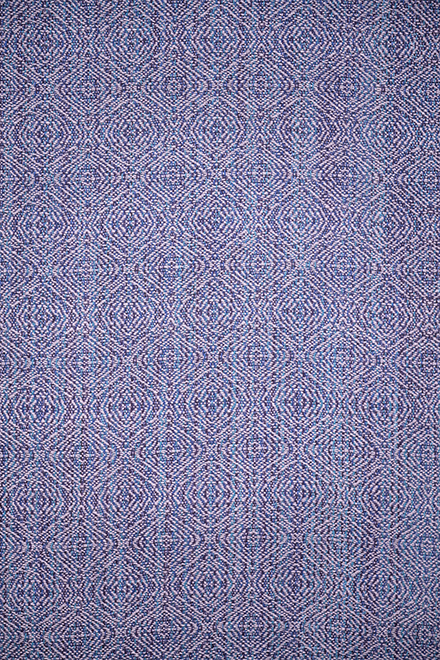
In response to my colleague, with fewer shafts, what could we could weave?
With fewer shafts, I find it easier to manipulate the threading.
For an eight-shaft version, I started with a pointed twill as shown below with the intention of making it a diamond which then can be rounded in some way, the same thought I had when designing the 40-shaft version.
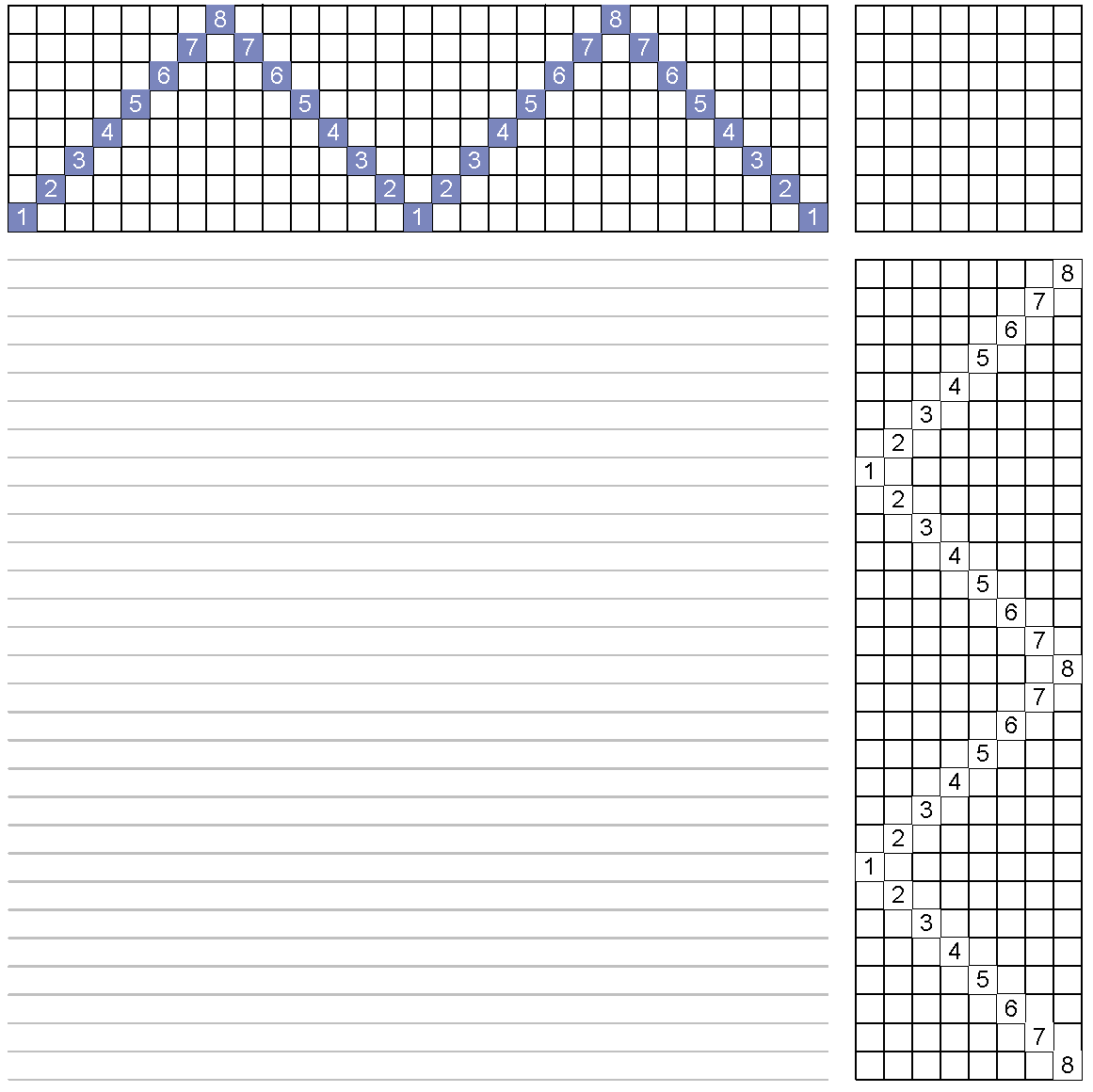
To round it, we can elongate the threading or the treadling or both. With fewer shafts I generally prefer to manipulate the threading, so I can think of my motif even before I consider the treadling steps.
As shown below this becomes an undulating pointed twill. In my experience with undulating twills, the floats can get so long to make the fabric unstable. Here I chose to double the threads on shaft 4 and 6. For a more rounded shape, we could triple some and double others, but again, long floats have to be assessed.
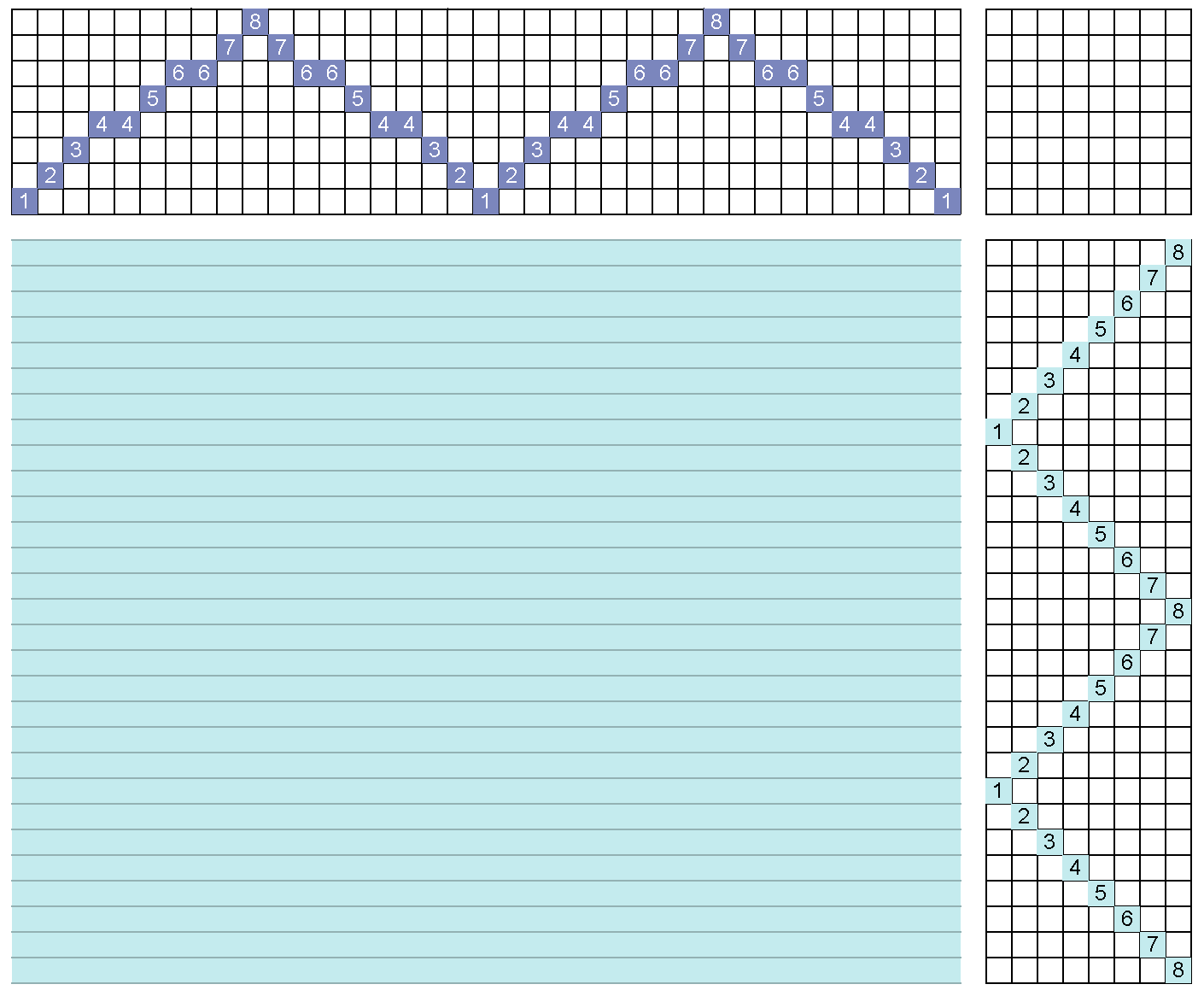
Next, I chose a tie up. In this example I started with 2/1/2/3. I then placed an additional tie on shaft 4 to delimit the float. This way there aren’t any floats warp or weft-wise longer than 5 threads. Depending on the sett of the warp, that number could be larger for a close sett or smaller for a wider sett. Below is the drawdown for this step.
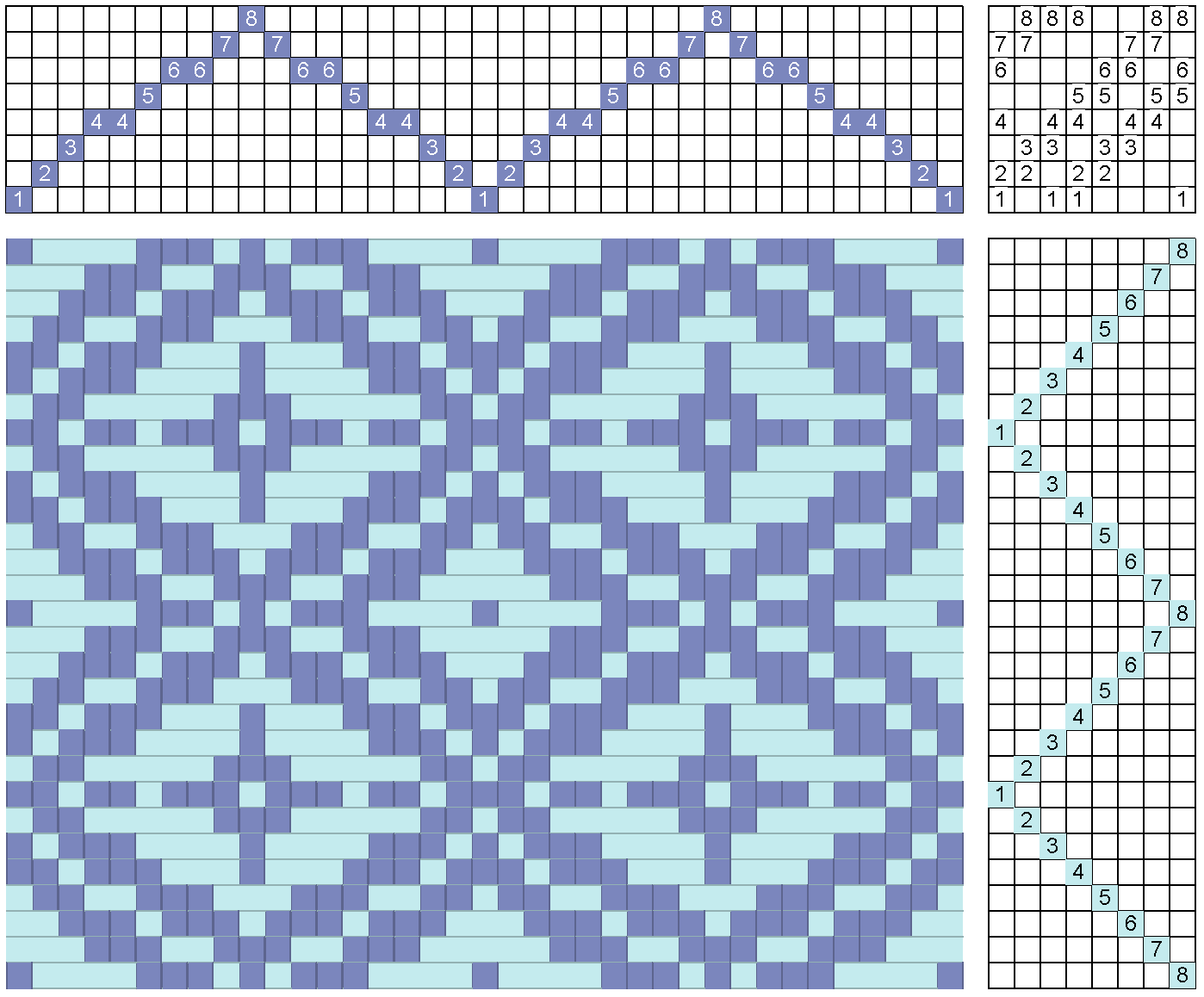
Looking at the drawdown, we see that there are two concentric rounded figures, not quite circles for sure, but reminiscent of a ripple. But we could add more, as shown below.
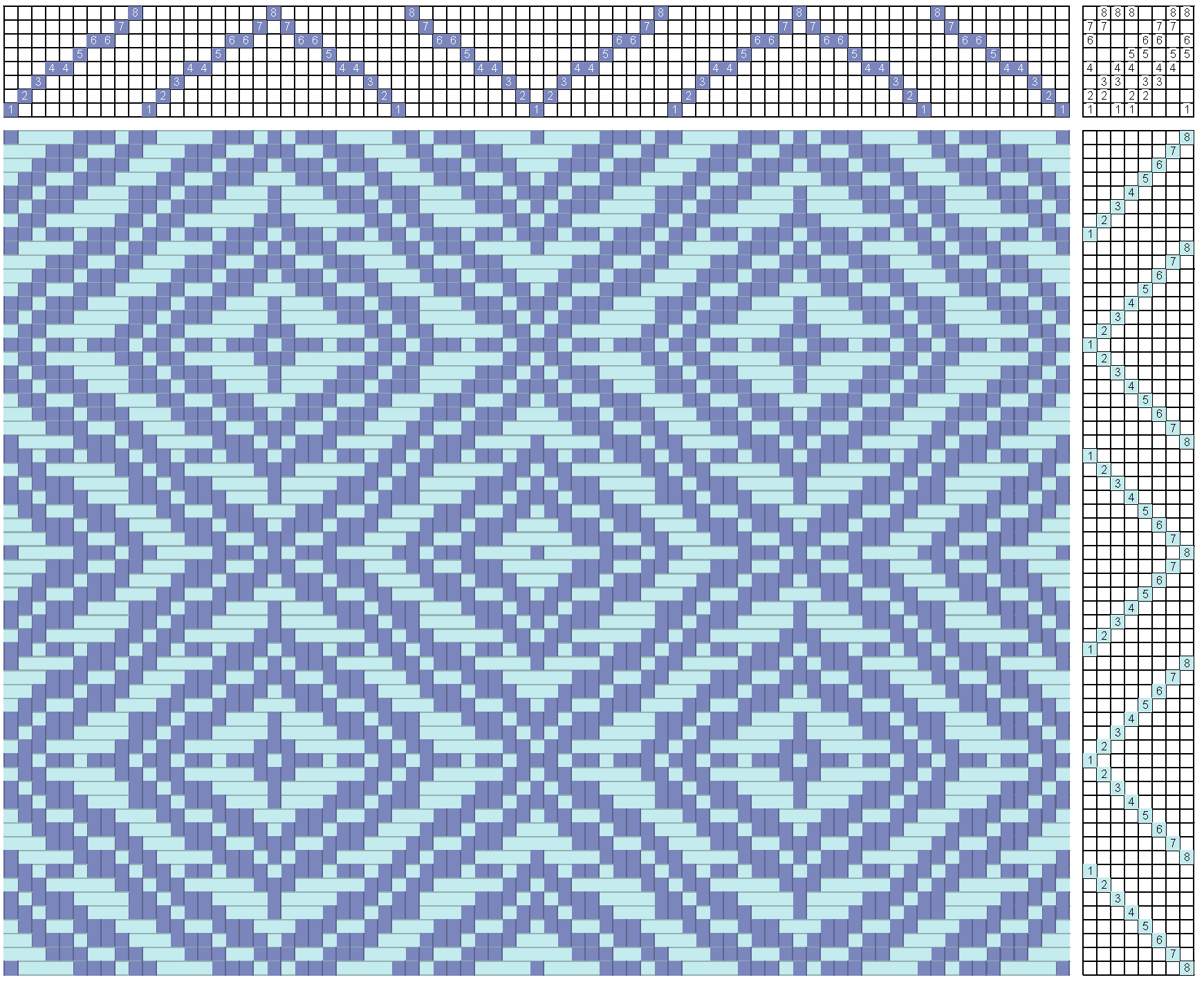
This is an extended undulating pointed twill. There are other options, of course, but the process to design the motif is the same.
What about 4 shafts? The process is the same here, too.
Instead of a pointed twill, I started with a bird’s eye twill, so the repeat is longer and there will be a nice center. I used the traditional bird’s eye twill treadling with the 2/2 tie-up, as shown below.

Next, I doubled threads on shafts 2 and 4, rounding the appearance a bit. Not doubling adjacent shafts avoids long floats. In this example there are no floats longer than 5 thread long.

Here is my final version: an extended undulating bird’s eye twill. It could be rounded more, but I will leave that up to you.
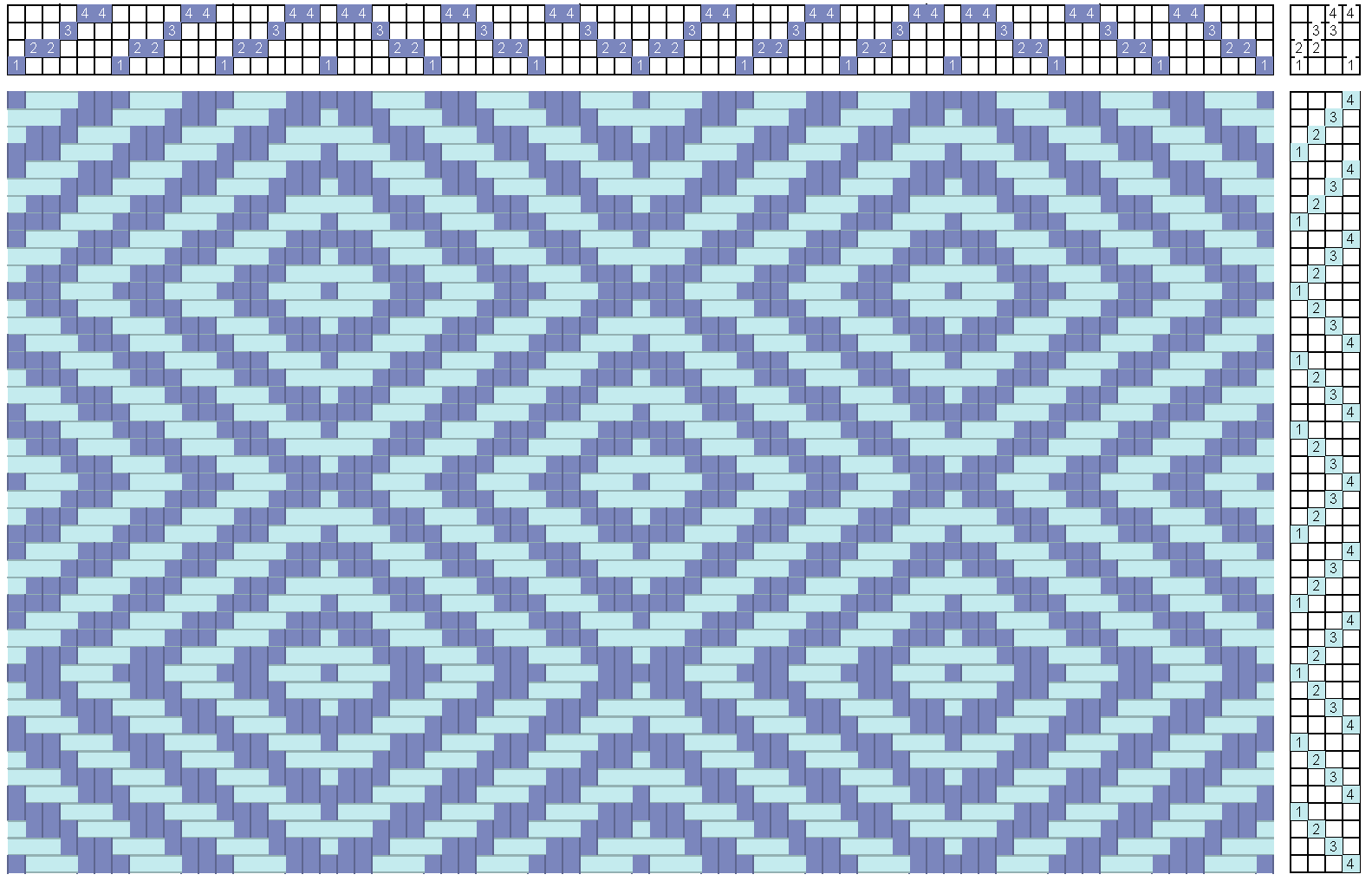
And, yes, you could weave this on a rigid heddle loom. Guatemalan and other native weavers do amazing designs with a pickup stick. It does require some patience.
Twills that have lines going at different angles change how we see the pattern and the color that they reflect, especially as they move. If we use shiny yarns, as I did in my shawl with Tencel™ and silk, there are actually two types of reflectivity: one is the usual light bouncing back from the color not absorbed. We see the purples and blues in my shawl. The other is called specular reflectivity which is ambient light that shines back (“Specular” comes from the Latin word for mirror, and specular light results from reflections as if by a mirror). The shawl appears lighter in spots where specular reflections bring out highlights – especially at the folds. Luminescence can result from these visual effects.
The process I have described here to obtain rippling can be applied to many other motifs. Drawdown software is very useful.
Happy Weaving!
Marcy
